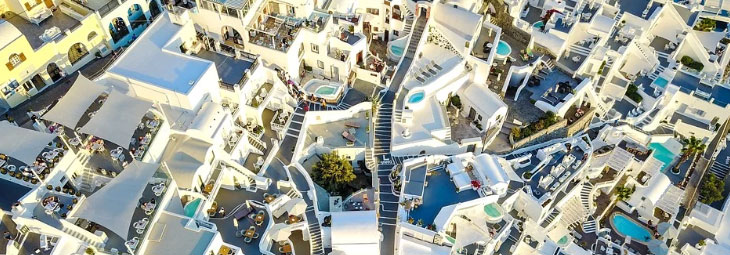



UPSC reporter: How to implement NUA through such tools like WCD etc.?
Piotr Lorens:
Well, first of all, we have to know that the NUA is a very complicated product. It is about planning, but it is also about many different things, including urban governance, reaction to climate change and all the other things. So this is not only about professional discussion, but also it is about different things associated with different actions of various responsive governments, also all the non-governmental organizations, also the private sector and so on.
So, I would say this WCD as a perfect vehicle for, first of all, sharing the information of what the NUA is about. Secondly, it’s about telling how complex it is, and also how diverse different actions can actually contribute towards this new urban agenda, towards this improvement of this situation. And finally, how all of those things are interconnected, to break down this silo type of thinking about this thing.
So shortly speaking, it’s about implementing this practice, this very old quote from declaration, which means THINK GLOBALLY, ACT LOCALLY. That means that you having all these 1719 goals of new urban agenda, in the end, you are wondering what the hell can I do with my little block, with my little issue, with my approach and so on? OK you can do this, you can do that, and all of that is not unimportant. It’s not unimportant, and it’s not all small and little. It is big, because it contributes to the big picture.
So it’s basically understanding the relationship, understanding the importance of even the small actions within a small area, and understanding that it contributes to we are part of the big picture for the cities and for the new century.
UPSC reporter: How planner as professional could play a key role in implementation of NUA?
Piotr Lorens:
There are two things.
First of all, we have to remember that the role of urban planners is actually changing. We used to play role as master planners, so we are basically drawing big pictures, you know, master plans, regional plans, planning cities for 20 million people, and things like that.
But this is not the case anymore. I mean, it might be the case in some cases, but first of all, the scope of planning is enlarging. So we are not just dealing with land use, route network, but we are also dealing with all these complicated problems associated with resilience, flood protection, housing issue and so on. I mean all of these are the planning problems.
Let’s taking food as an example. The question of securing adequate food for people might be very distant from the traditional planning. Actually, it is very distant from the traditional planning. But at the same time, according to my understanding, this is a part of the planning discussion. Because we have to also ask this question, how we can actually solve this problem also through proper planning? How this issue is associated with planning?
So on one hand, it is important that actually planners do understand that it is not only about land use planning anymore, but they should take into account all these things, and actually integrate them into one thing. They don’t actually believe it is possible to make a single comprehensive planning document, which it is dealing with all of that. We call things as “it is not the general material to everything”。 It’s not existing, it is not possible to make it.
What I think is important is to make physically to make the planners to understand the complexity, but also to show the relations. To show that when you are discussing the transportation network, it has the consequence of land use, the food support, or provision of the product, and so on. But you have to show the consequences, to show how to cope with the issues.
Secondly, it is a very important for all the planners to serve not only as “the best servant of the public sector”, but of the entire community. Planners need to advise them what is doable, what is not possible, and also what will be the consequence of certain actions. So it is very important for the changing of the planners from the master planner to advisor and the person who is able to negotiate different things and show consequences of certain action.
Finally, I think it’s important that actually planners come back to the provision of this role of the urban designer of the architect of space. We are actually coming back to the issue of providing the high quality space, the high quality urban environment, which is very important from the average person’s point of view. And if you are living in here and there, you don’t really consider flood protection, or this kind of major issue. Of course it has to be solved. But what is important from your point of view, if you are an average citizen, is the quality of the space in which you are living. This is something we should come back. Within this whole discussion about the NUA, we should remember that one of the role of planning is actually to provide high quality space, and discuss what actually means to provide high quality space.
I think once we enlarged the profession, we have to come back to the center at the same time. This is my perception, thank you.